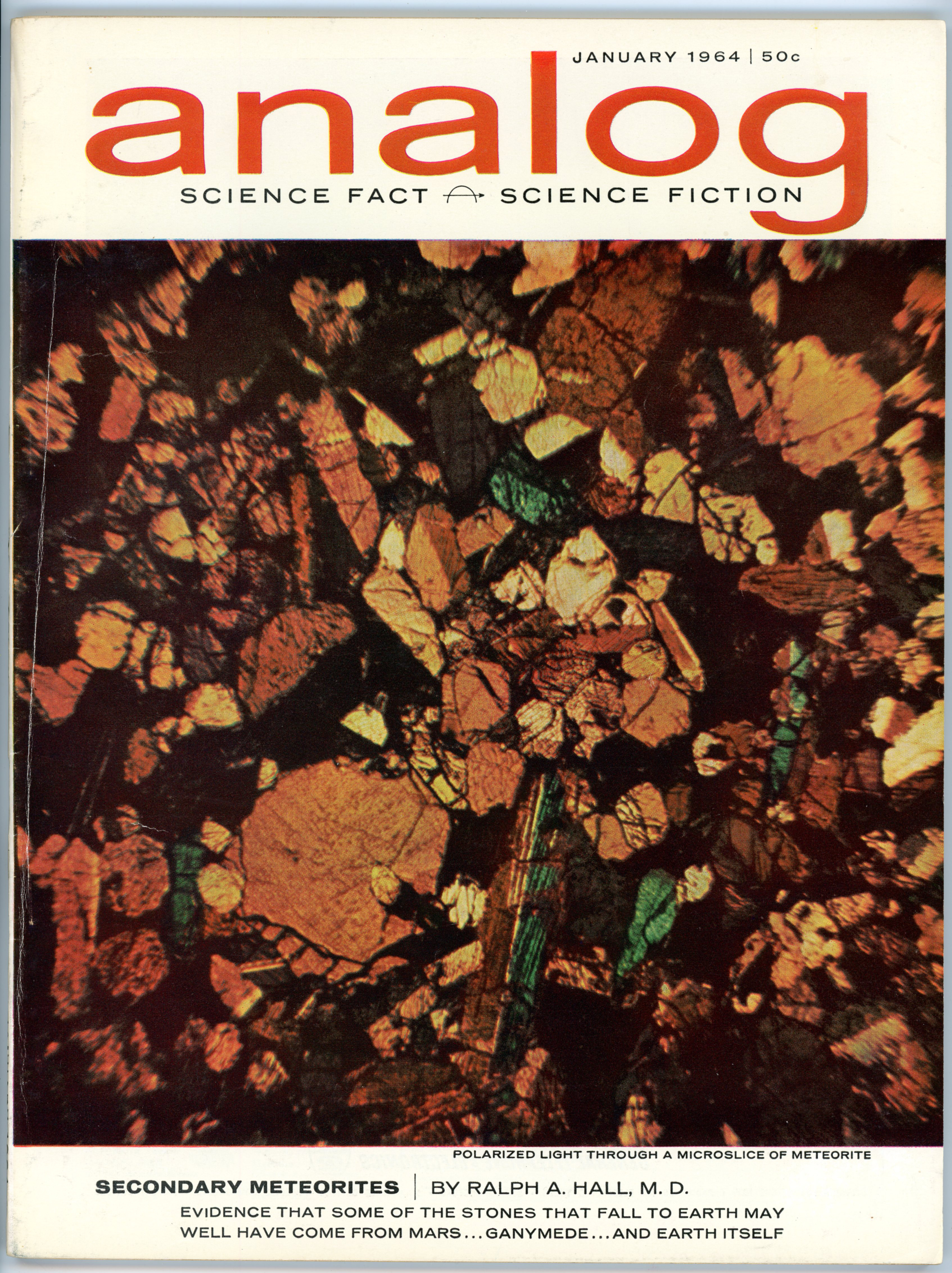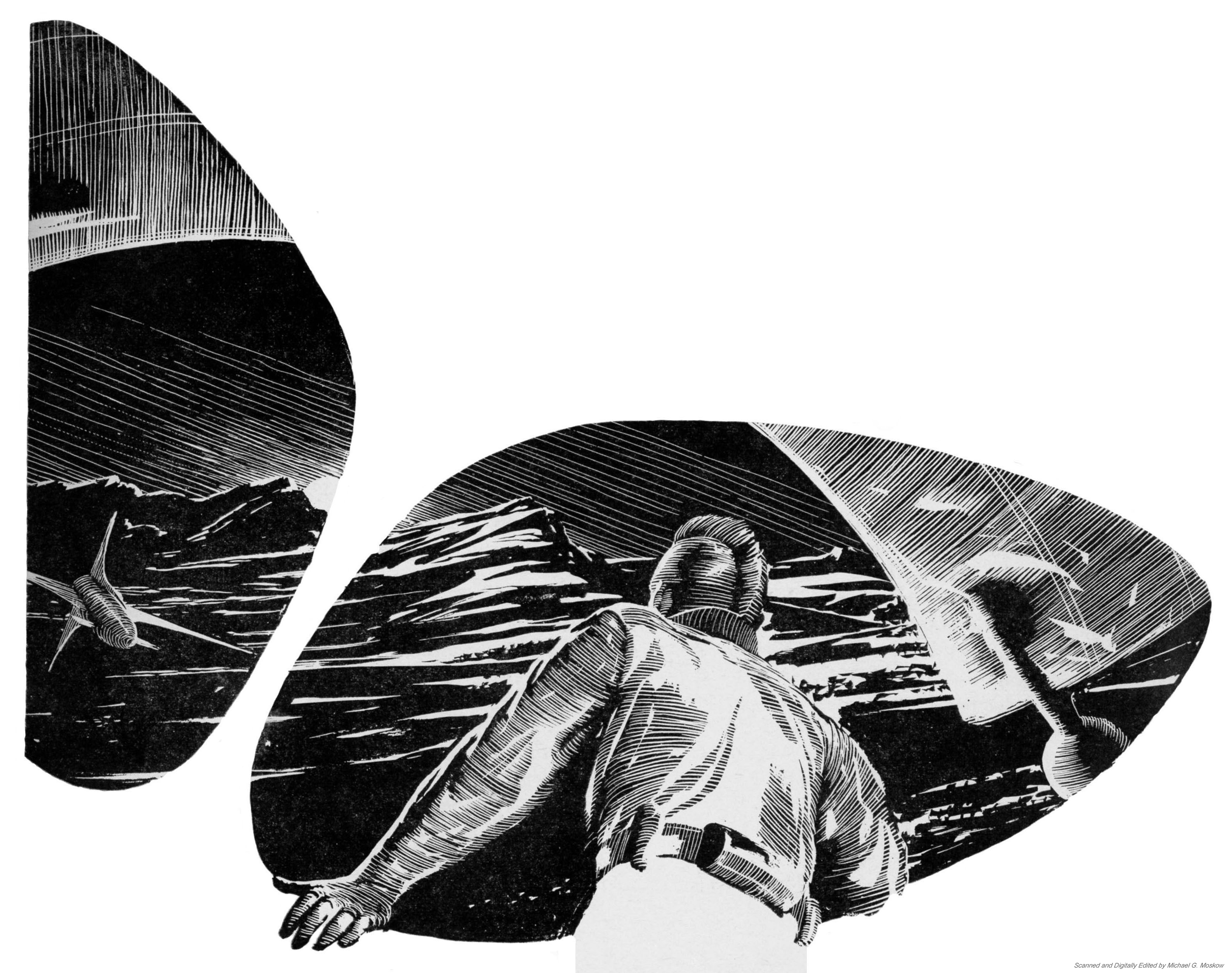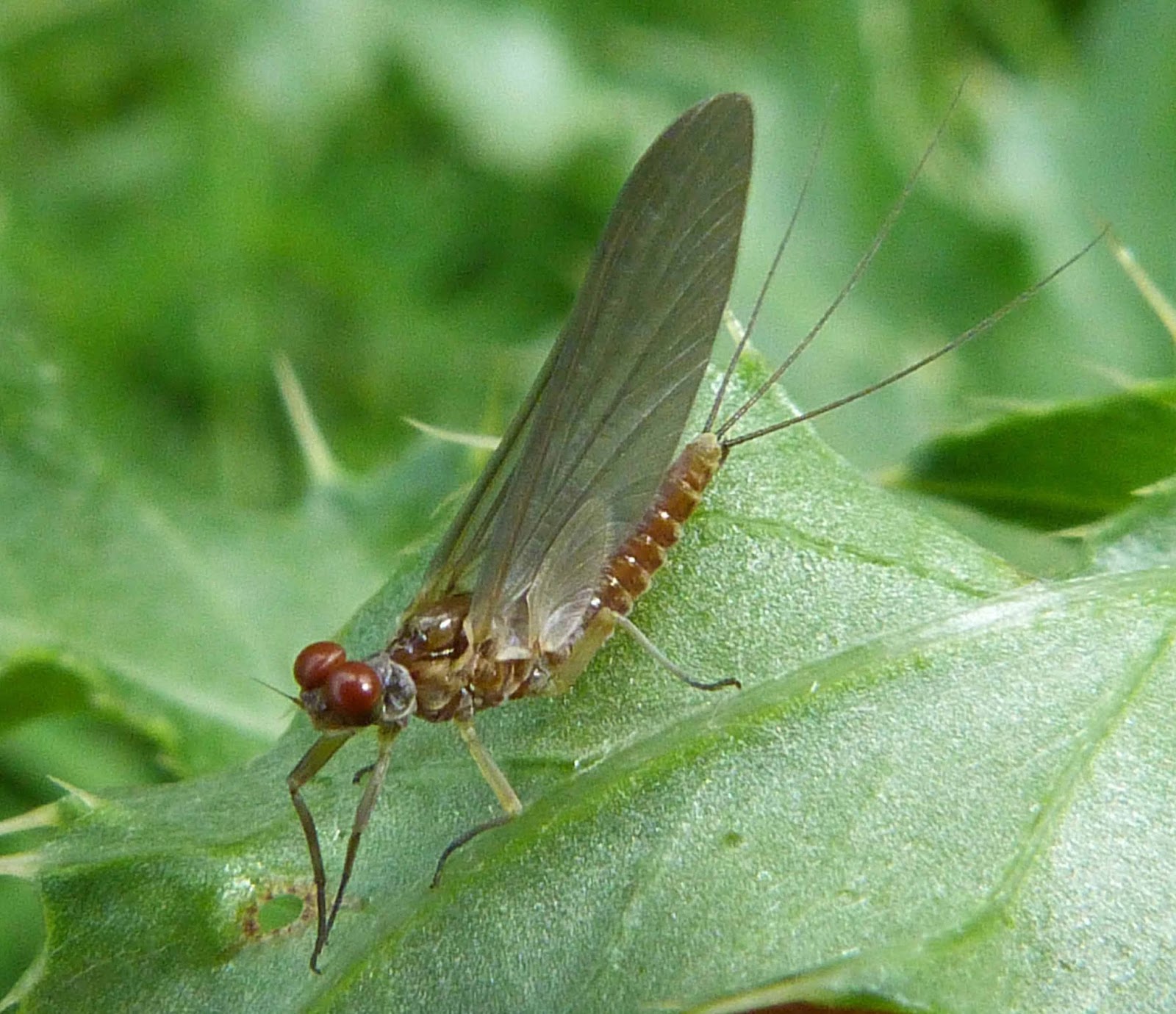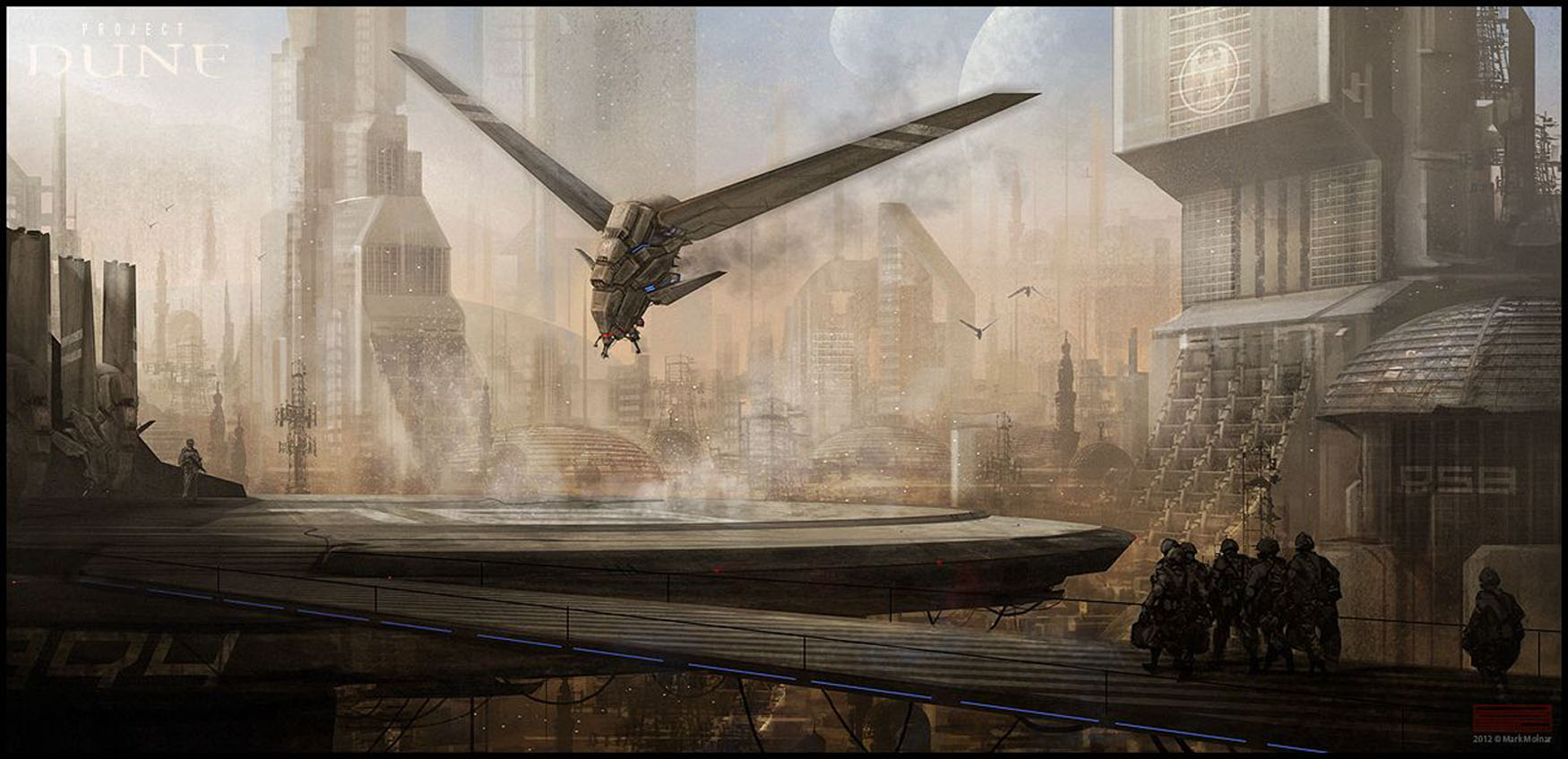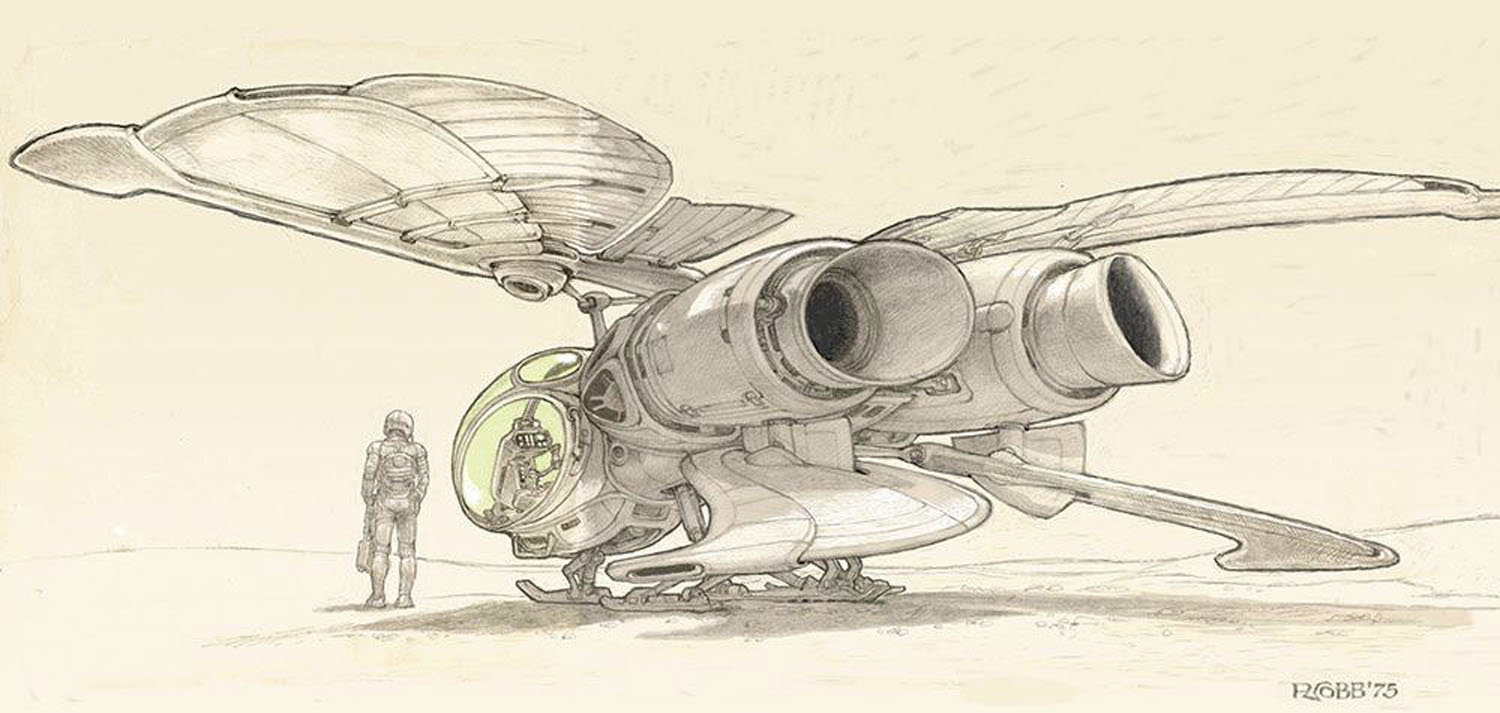Update!…
Dating from May of 2023, this post has now been revised to reflect a recent observation by reader Brian Gothberg.
As he’s written, “The content you’ve created,” showing at the works of John Schoenherr, “…is thoughtful and entertaining; thank you!
One small correction: there’s an illustration of an ornithopter you’ve attributed to Alejandro Jodorowsky, for his never-completed “Dune” film. Although it was certainly created for that project, the art is actually by Ron Cobb. (The visible signature says “R Cobb ’75”.)
Keep up the good work!
Best,
Brian”
And, thank you, Brian!
 The second installment of Frank Herbert’s Dune: Analog, January, 1964.
The second installment of Frank Herbert’s Dune: Analog, January, 1964.
There’s not much in the way of cover art for this issue of the magazine, because the editors went all non-fictiony and for a cover illustration used a photograph of what’s termed a “microslice” of a meteorite. Since we’re talking geology, the commonly accepted / correct term would actually be – as it was in the 1960s – “thin section”.
So, on to John Schoenherr’s art…
___________________________________
Duke Leto Atriedes, complete with mohawk haircut (which didn’t show up in any film or television version!), observes incoming missiles during the Harkonnen attack on Arrakeen.
Analog, January 1964, p. 48 [Ace 1963, p. 154]
Is this the Harkonnen attack? she wondered.
___________________________________
Stilgar’s meeting with Duke Leto: Stilgar enters, blade sheathed.
 Analog, January 1964, p. 58 [Ace 1963, pp. 99-100]
Analog, January 1964, p. 58 [Ace 1963, pp. 99-100]
“Keep that blade in its sheath!”
The voice came from the open door at the end of the room,
a vibrant and penetrating voice that brought them all up, staring.
A tall, robed figure stood at the door,
barred by the crossed swords of the guard.
A light tan robe completely enveloped the man
except for a gap in the hood and black veil that exposed eyes of total blue – no white in them at all.
“Let him enter,” Idaho whispered.
“Pass that man,” the Duke said.
The guards hesitated, then lowered their swords.
The man swept into the room, stood across from the Duke.
“This is Stilgar, chief of the sietch I visited,
leader of those who warned us of the false band,” Idaho said.
“Welcome, sir,” Leto said.
“And why shouldn’t we unsheathe this blade?”
Stilgar glanced at Idaho, said:
“You observed the custom of cleanliness and honor among us.
I would permit you to see the blade of the man you befriended.”
His gaze swept the others in the room.
“But I do not know these others.
Would you have them defile an honorable weapon?”
“I am the Duke Leto,” the Duke said.
“Would you permit me to see this blade?’
“I’ll permit you to earn the right to unsheathe it,” Stilgar said, and,
as a matter of protest sounded around the table,
he raised a thin, darkly veined hand.
“I remind you this is the blade of one who befriended you.”
___________________________________
Using a three-dimensional holographic projector, Duke Leto displays an image of a spice harvester to his team, among whom are mentat Thufir Hawat, and, Gurney Halleck.
Analog, January 1964, p. 53
A solido tri-D projection appeared on the table surface about a third of the way down from the Duke.
Some of the men farther down the table stood up to get a better look at it.
Scaled against the tiny projected human figures around it,
the machine was about one hundred and twenty meters long and about forty meters wide.
It moved on independent sets of wide endless tracks.
“This is the latest model harvester-factory,” Hawatt said.
“We chose one in good repair for this demonstration.
There’s one dragline outfit, though,
that came in with the first team of Imperial ecologists and it’s still running,
although I don’t know how … or why.”
“If that’s the one they call ‘Old Maria,’ it belongs in a museum,” Halleck said.
“I think the Harkonnens used it as a punishment job,
a threat hanging over the heads of the workers. Be good or you’ll be assigned to Old Maria.”
___________________________________
Arrakeen
 Analog, January 1964, pp. 76-77
Analog, January 1964, pp. 76-77
General illustration; no specific text.
___________________________________
Probably Schoenherr’s most interesting illustrations are the two below, showing his conception of ornithopters. Among the bulbous nose, delicate pair of warped wings, narrow body, and appearance of delicacy and fragility, there is a distinct and striking resemblance to the body plan of mayflies, images of which follow below…
Ornithopter airborne, with landing gear retracted: Rear view
 Analog, January 1964, pp. 68-69
Analog, January 1964, pp. 68-69
General illustration; no specific text.
___________________________________
Ornithopter parked: Front view.
General illustration; no specific text.
___________________________________
Callibaetis ferrugineus hageni
Photo by Harvey Schmidt, at Harvey’s Spiders n Stuff.
_______________
Serratella ignita (male), at Darnley Country Park, Darnley, South West Glasgow, Scotland
Photo at Insects of Scotland
_______________
Mayfly
Photo by Dave Funk, at Bugs are Beautiful, courtesy Stroud Research Center.
_______________
Mayfly
Photo by David Panevin, at Welcome Wildlife

___________________________________
Moving from the natural world to the world imagined, here’s a video from The Templin Institute – “Ornithopters Dune” about ornithopters as designed and depicted in Villeneuve’s film.
_______________
While – “Dune: How Denis Villeneuve Designed the Ornithopters” – at IGN (“daily videos about the latest gaming and entertainment news and up to the minute events coverage”) includes an interview of Villeneuve about the topic.
Both of the above videos can be found at Would You Fly a ‘Dune’ Ornithopter? I’d definitely give it a whirl. Or a spin. Or most likely a flutter or two.
___________________________________
Here are three other depictions of ornithopters.
This painting, “Dune Ornithopters Landing”, is by Mark Molnar, and is from Project Dune at Pinterest.
From “What are the best artistic renditions of ornithopters you’ve seen?” at Reddit, this conception is a work by Ron Cobb from 1975, as indicated by his logo at lower right. Examples of Ron Cobb’s science fiction and fantasy work can be seen here, at – appropriately – Ron Cobb.com.
From Ornithopters at Reddit is this version by u/dev/Lloyd.
And, we also have Tim Samedov’s Ornithopter Dune 3d model, at Art Station.
___________________________________
These, Too, Will Interest You
Dune…
… at Wikipedia
…at Britannica
… at GoodReads
… at DuneNovels
… at Internet Speculative Fiction Database
… John Schoenherr…
… at Wikipedia
… at Internet Speculative Fiction Database
… at ArtNet
… at Invaluable
May 12, 2023 – 196

